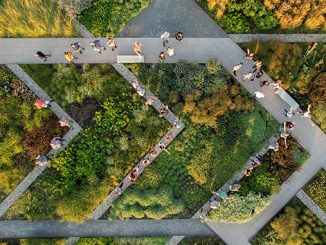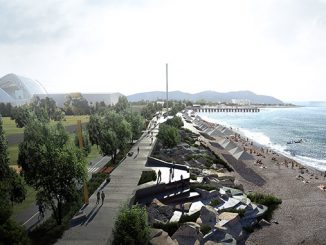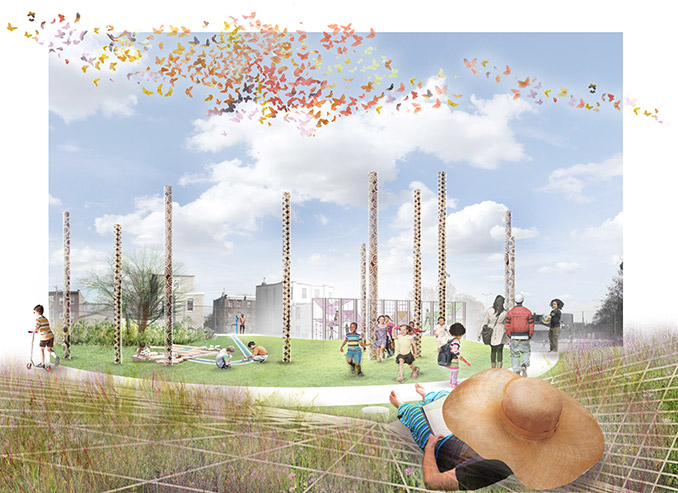
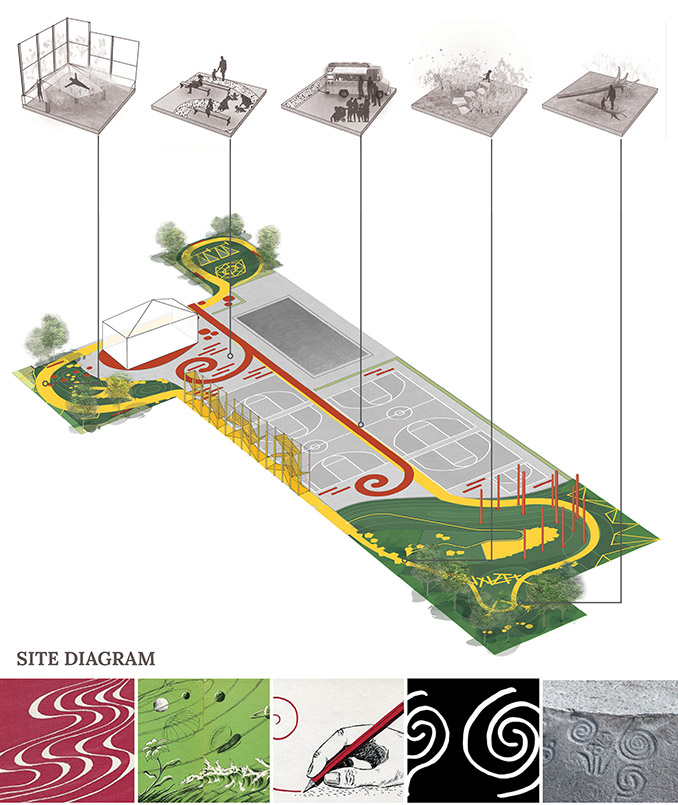
When the Philadelphia-based Community Design Collaborative debuted its second international INFILL competition “PlaySpace,” featuring nature play as a theme, Roofmeadow, Studio Ludo and Space for Childhood combined efforts to participate. Three years ago, Roofmeadow’s team won the first INFILL competition, which featured cutting-edge stormwater-management innovations. The Waterloo Recreation Center, one of three sites featured in “PlaySpace”, presented another opportunity for the team to test theories on urban green infrastructure, as well as explore the possibilities of nature play.
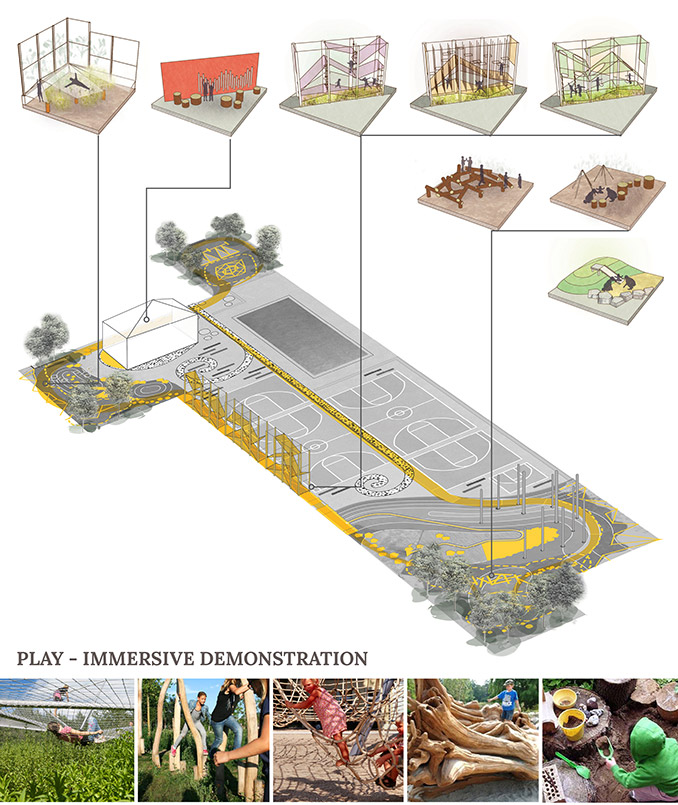
The team’s design, entitled “Waterloo Rebosante”, was selected a winner of “PlaySpace” in the spring of 2016. Taking cues from the local culture and surrounding community, the team was inspired to create an atmosphere based on the Spanish word “Rebosante”, which means bustling, brimming, overflowing. The theme extends into the design’s physical interventions, which focused around five key priorities: community, nature, water, play and re-use.
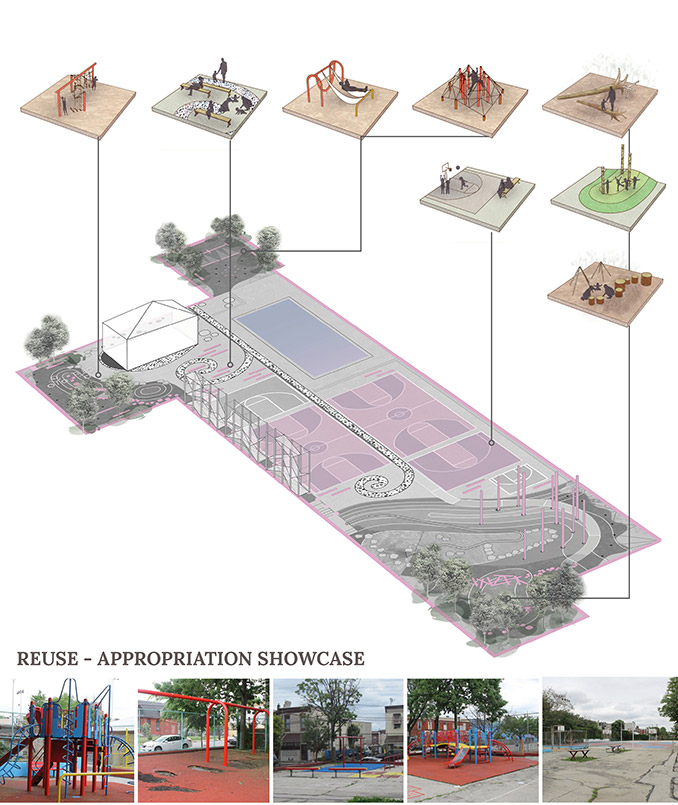
The existing basketball courts, pool and community building, which act as a social core to the site, were retained and restored in the team’s design. When not used for basketball, the courts have the potential to transform into a plaza or night-market. Electrical power connections and lighting extend park hours and allow in food and craft vendors. Salvaged tree trunks are repurposed as moveable lumber benches and iconic vertical art elements attract visitors into the site. The old Waterloo Street was also emphasized as a central spine, transformed through a collaborative community mosaic project. Spirals for gathering at either end echo the Taino symbol for water, in the pictographic language of the Caribbean islands whose diaspora enriches both the neighborhood, as well as the greater Philadelphia region.

Rather than a wholesale demolition of the existing impervious surfaces and materials, the team’s design provides strategic topographic interventions from the margins that enfold habitats, which attract hundreds of birds and pollinators to the site. Visitors are greeted with a comforting palette of natural materials that complement the adjacent hard surfaces. Opportunities for creative play are provided; spaces are stocked with plenty of loose parts including seed-pods, tree cookies, plant stalks, and sand.
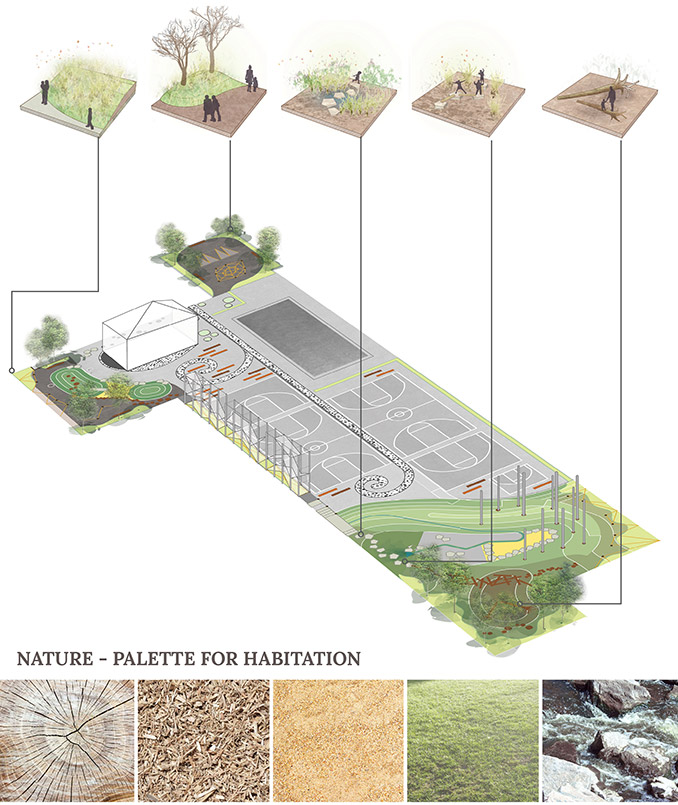
Existing slopes direct the pattern of water flow across the site into green stormwater management features. Strategically placed curbs direct and concentrate seepage flow and create opportunities for water-play. Infiltrated rainfall seeps through planted topographic berms and is directed to a small brook. For days following a rainfall, naturally filtered water continues to flow into the brook, allowing for extended creative water play. Water harvested in a cistern at the low point of the play space becomes a battery that supplies ongoing nature play.
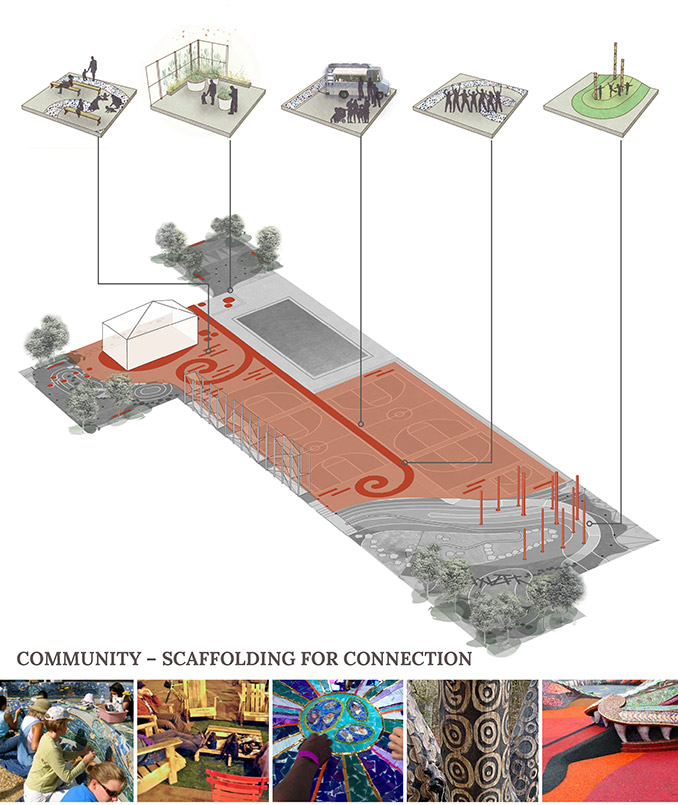
The team was eager to go beyond the standard post and platform playground design to create a truly immersive, unbounded nature play experience. The design is rooted in existing site materials, from netting in basketball hoops, to the timber of adjacent trees. The site is divided into age specific play areas, with places for teens, children under five and children aged five to twelve, as well as two immersive play experiences for all-ages that link areas together into a continuous play ribbon that spans the site.
Rather than demolish elements of the existing playground, the team explored ways to repurpose them. The worn rubber surfacing is covered with engineered wood fiber for a wheelchair accessible safety surface. The existing posts, swing frames and slide are transformed into entirely new play experiences as hammocks, climbers and art frames. The walls of the community building are used as a stage for dramatic play and “tin pan alley”, a collection of musical instruments that connects the under five and teen area. Salvaged tree trunks become large-scale scramble climbers, log stump benches and steppers.
It was important to the team that children have the power to generate their own experiences at the site. Several design details empower such usage. A hand pump brings rainwater out of the cistern through a sluice and into a brook, mixing with sand and mud to provide a dynamic play environment. In dry areas, loose parts encourage fort building and construction play, giving children plenty of opportunities to explore and get their hands dirty. There are also opportunities to change perspectives, with crawl tunnels and meadow hammocks that put children at bugs eye view, and a dynamic cloud climber that puts them at birds eye view, with elevated vantage points and adventure climbing challenges.
The “Waterloo Rebosante” design imagines a kit of parts that is ideally suited for transforming old urban playgrounds. These parts emphasize the use of natural materials, and can be mixed creatively and applied on sites of all scales and complexity, precluding wholesale demolition. Many are inexpensive, and can potentially leverage the skills and resources of the local community. The kit of parts is a powerful tool for enlivening play spaces strategically over time, while also providing opportunities for elements that make projects unique, reflecting the history, constraints, and assets of each site. Woven together, an iconic park is created, overflowing with community energy and rooted in a deep sense of place and belonging.
Thanks to the Make the World Better Foundation and Urban Roots, the Waterloo Recreation Center rebuild effort is underway, scheduled for completion in late 2017. Roofmeadow and Studio Ludo have now partnered on a joint venture known as Ludomeadow, focusing on the design of great play spaces for all ages, with the added benefit of stormwater management.
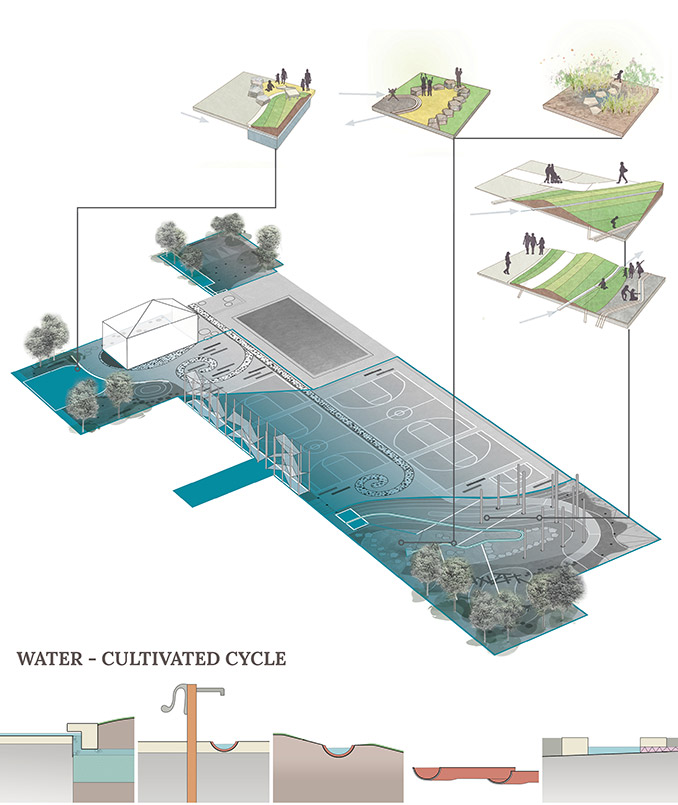
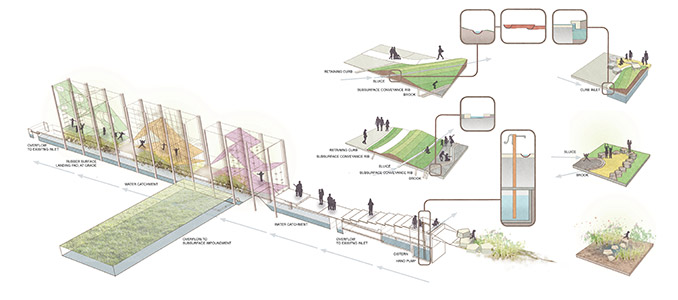
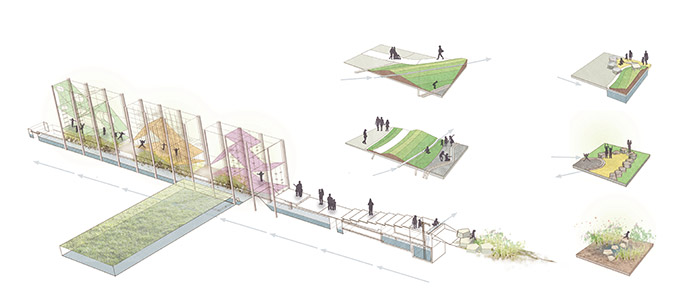
Waterloo Rebosante
Design Firm | Roofmeadow
Project Location | Philadelphia, PA, USA
Text | Roofmeadow and Studio Ludo
Images | Roofmeadow and Studio Ludo

